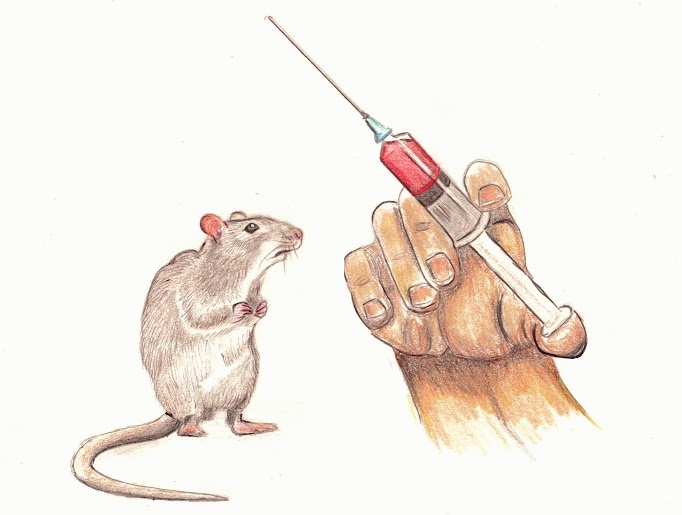
Controversy
The issue of animal testing remains a major moral conundrum: is the life of a mouse or rat worth the life of a human being? Of course, people want drugs and treatments that will keep them healthy, and they want them to be safe and have the minimum possible risks, but many people cringe at the thought of the animals that these drugs are tested on.
Some of the more extreme animal rights groups campaigning against animal testing refuse to accept that there are any benefits to testing on the basis of pharmaceuticals, and believe that it should be banned altogether. These groups at times spread misinformation regarding animal testing is spread by these groups.
In 2008, for instance, author John Banville wrote a letter to The Irish Times attacking Trinity’s policies on vivisections. He cited a statement from a member of National Animal Rights Association (NARA) that claimed that College performed research on “mice, rats, rabbits, and even horses, when they can.” The group claimed that most of this was for the purpose of teaching medical students, rather than actual research.
While it is true that senior freshman science students taking the Vertebrate Form and Function module (BY2202) are required to dissect rats – many of which have been used for research already and have been humanely euthanised – many people outside of College seem to believe that researchers perform vivisections on unanaesthetised animals, which is an absurd idea that has been rejected by the college on more than one occasion following accusations by animal rights groups. Such experiments do not take in fact take place, the School of Medicine has confirmed.
Justification
Many animal rights groups propose ideas such as computer simulations as a viable alternative to animal testing, but if, say, a new potential drug for Alzheimer’s was being tested, a computer simulation could only show how that drug would affect a single part of the body. Such drugs affect more than one system, and this cannot be shown in a simulation. Even if it did only affect one system, this method probably wouldn’t show all effects of the drug on that system. This is where animal testing becomes important. Tests on animals show how a drug affects the body as a whole, rather than just the targeted areas, and show how safe the drug is before it can come anywhere close to human trials. This minimises the risk to humans undergoing trials for these drugs. However, unfortunate side effects can still occur.
In 2006, Parexel International tested a new drug which had been proposed as an anti-inflammatory and a potential treatment for leukaemia on six healthy young men. The animal tests (performed on cynomolgus macaques) had shown no severe side effects, and the drug had been cleared for human trials. When these six men took the drug, however, they ended up at death’s door, suffering from multiple organ failure. Thankfully, all the volunteers survived the ordeal.
Of course, saying that we have an absolute right to use animals, or no right to use them, are both extreme views. The idea that the use of animals is fraudulent involves the thinking that it is not possible to extrapolate studies based on animals to humans. This argument is hugely flawed, and highlights a misunderstanding of biochemical processes essential to most lifeforms.
Speciesism
There are two schools of thought among those who believe that humans have no right to use animals: speciesism, and personhood. Speciesism compares the use of animals to racism, and imposes certain ‘natural rights’ on animals which are equal to the rights of humans. This concept disallows the use of animals for anything other than a human-animal companionship.
Personhood involves the concept that animals are aware of themselves, and that the value of a life, be it animal or human, cannot be measured by how useful it is to others, but by its experience of how important its life is to itself. Proponents of this concept tend to believe that all humans should be vegetarians or vegans, and that the use of many animal products is exploitation. More extreme proponents of personhood have been known to employ terrorist methods to convince people that their view is the correct one. Some have even been known to discourage diabetics from taking their insulin, as it comes from pigs.
Organisations such as the People for the Ethical Treatment of Animals (PETA), known for their shock-factor campaigns and sometimes unfounded accusations of cruelty and neglect, would be strong proponents of personhood. There are similar groups which share these ideals not far from College’s front arch. Each weekend see’s a group of a dozen protesters outside of Barnardo Furriers at the foot of Grafton street, campaigning for closure of the clothing shop.
Animal testing is a huge moral dilemma in the modern era, but it is difficult to know what could be used as an alternative. At present, there is no viable alternative, and many people are not happy about this. It seems unlikely that an alternative that does not involve live animals will appear any time in the near future, but perhaps one day it will not be necessary.
Illustration: Sarah Larragy






